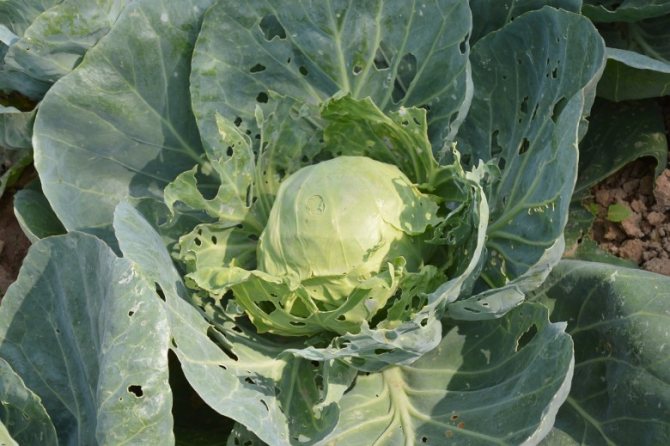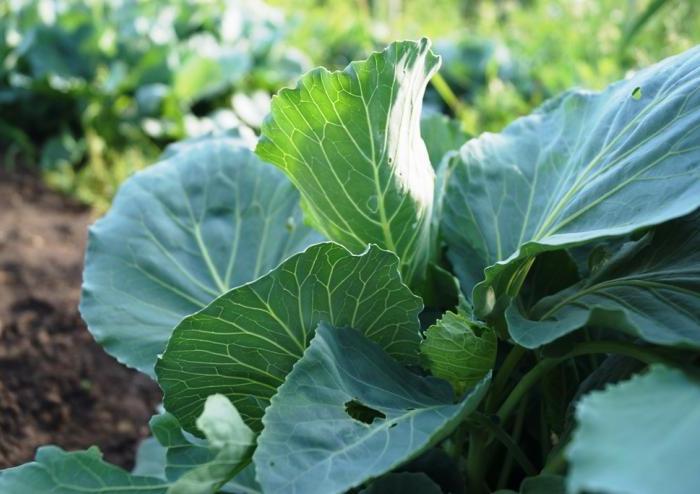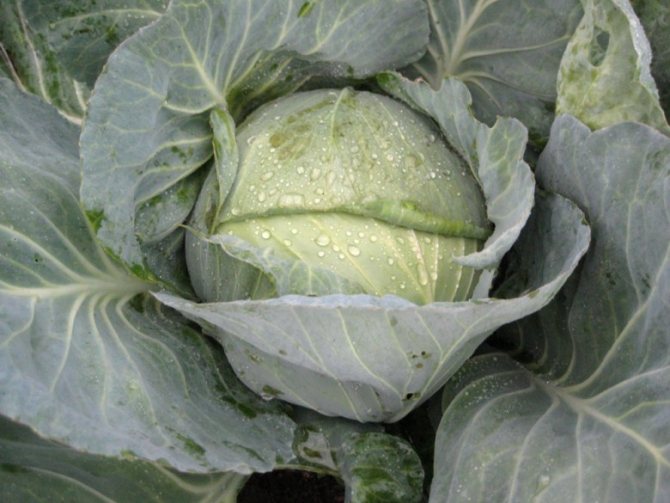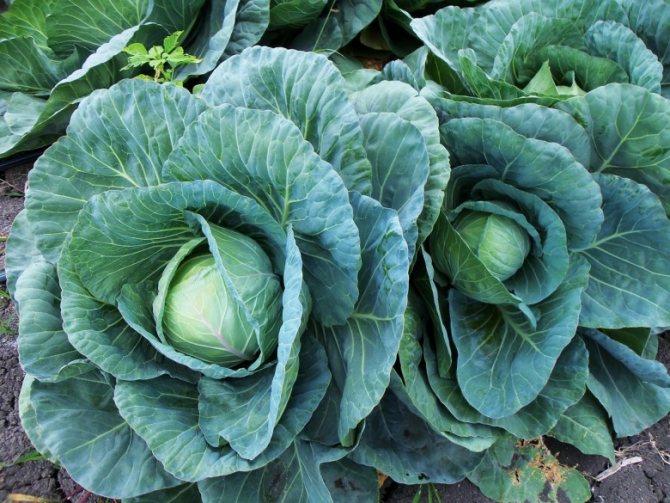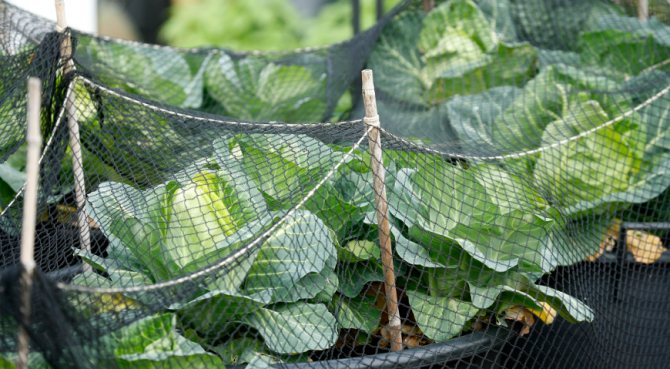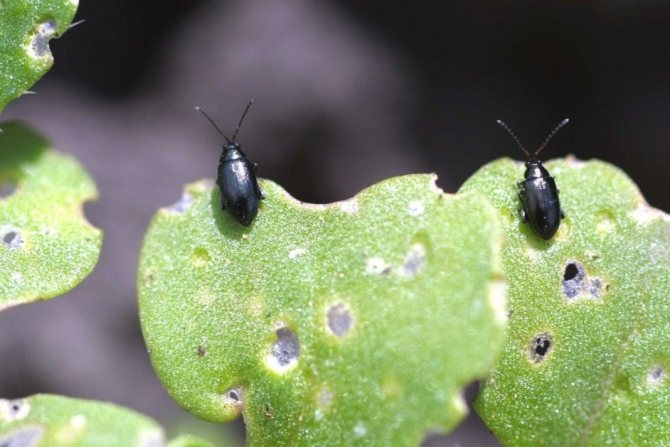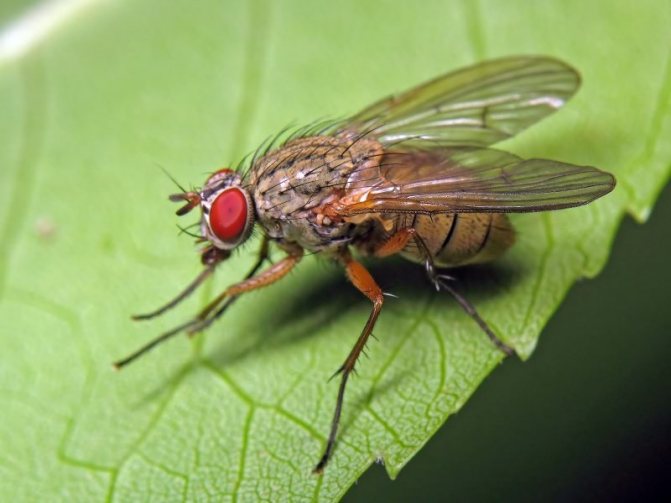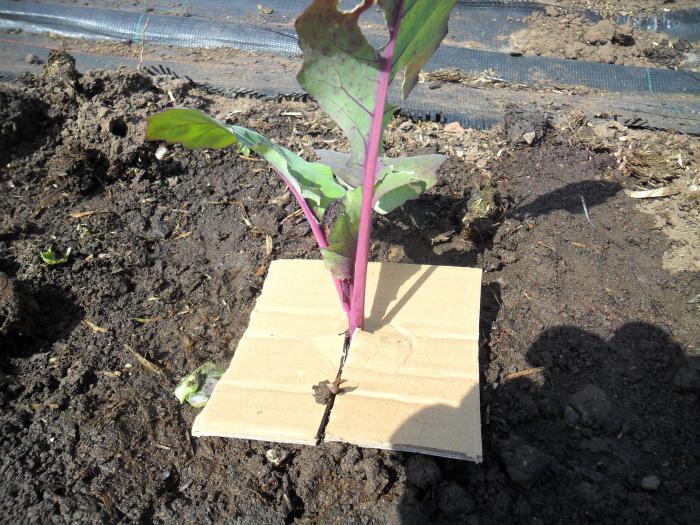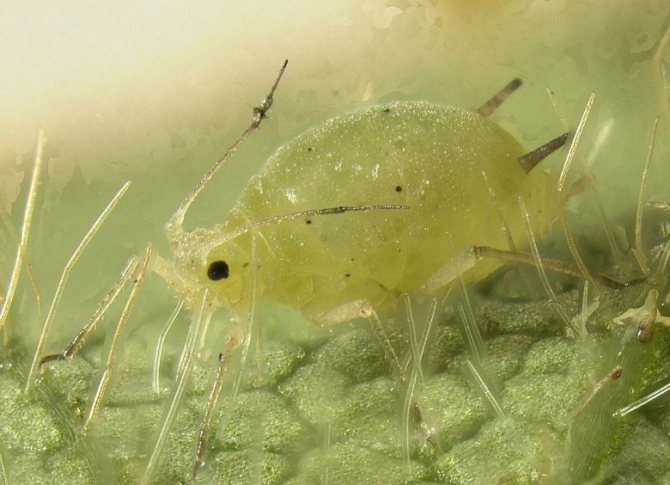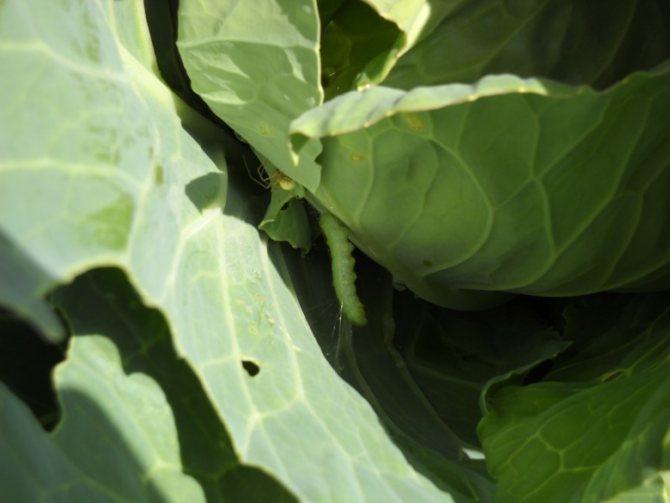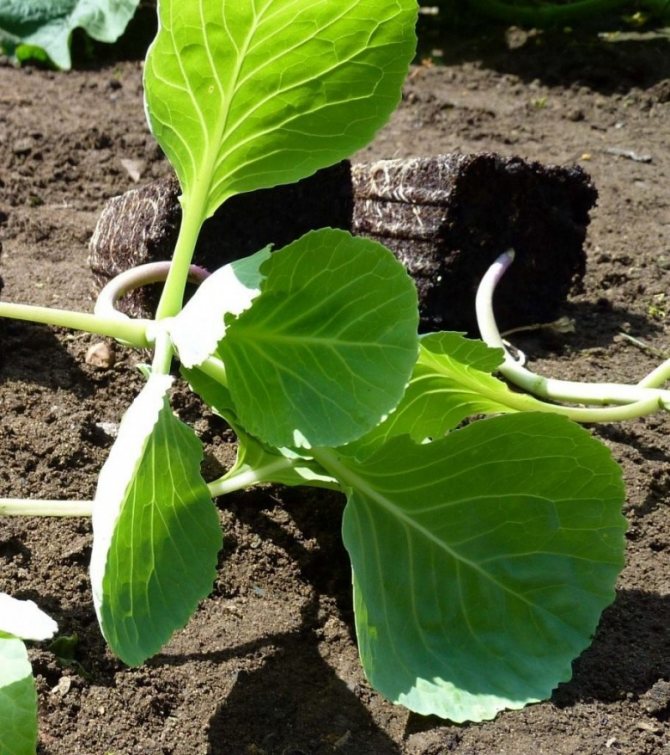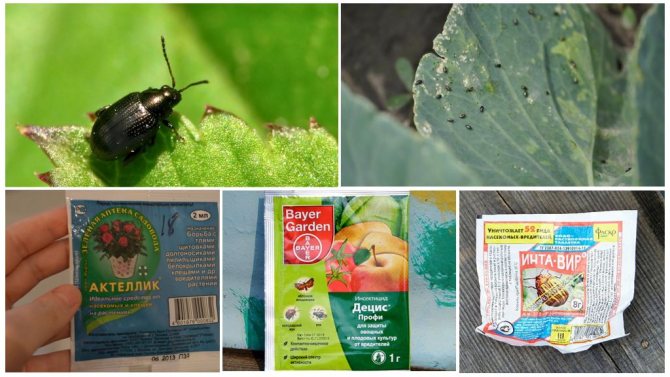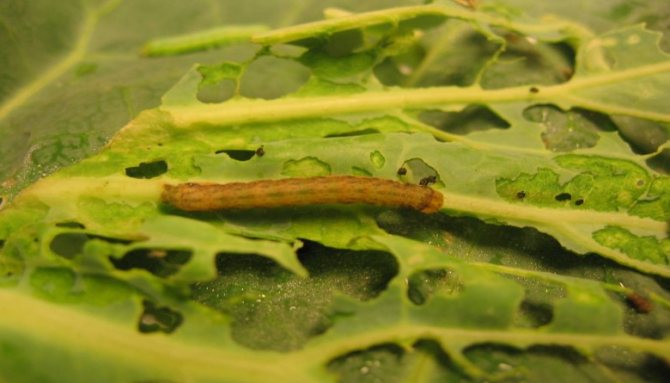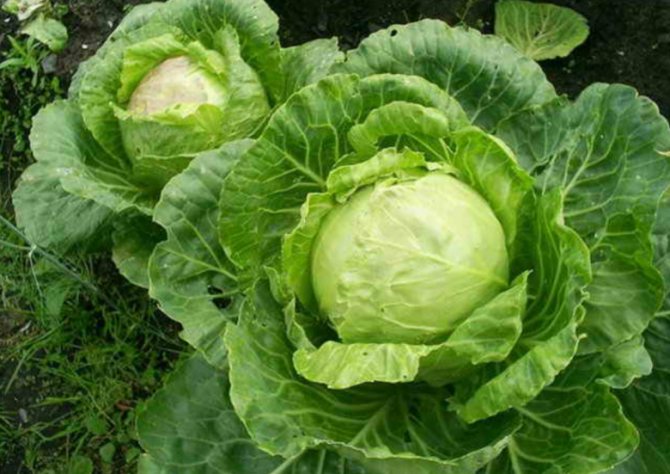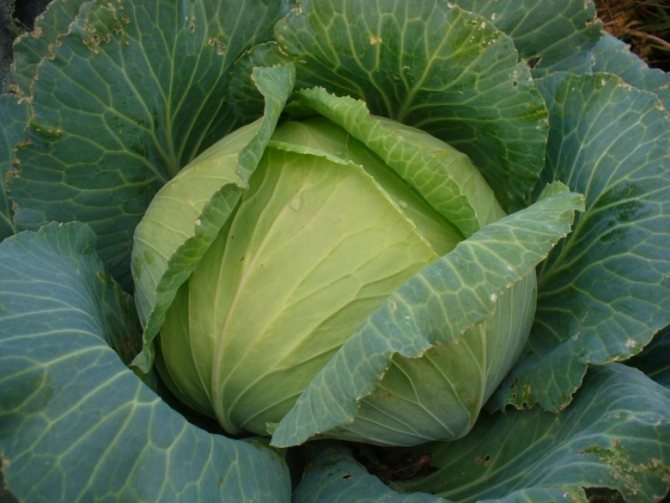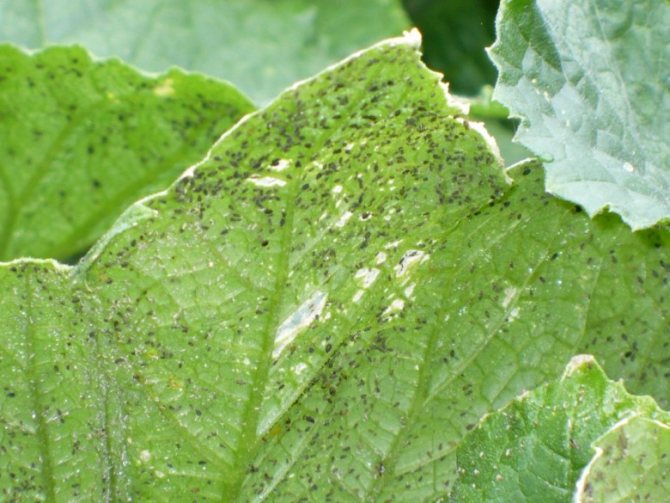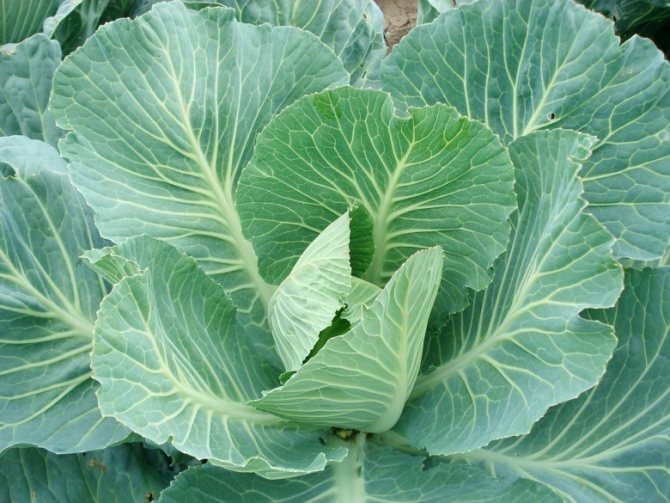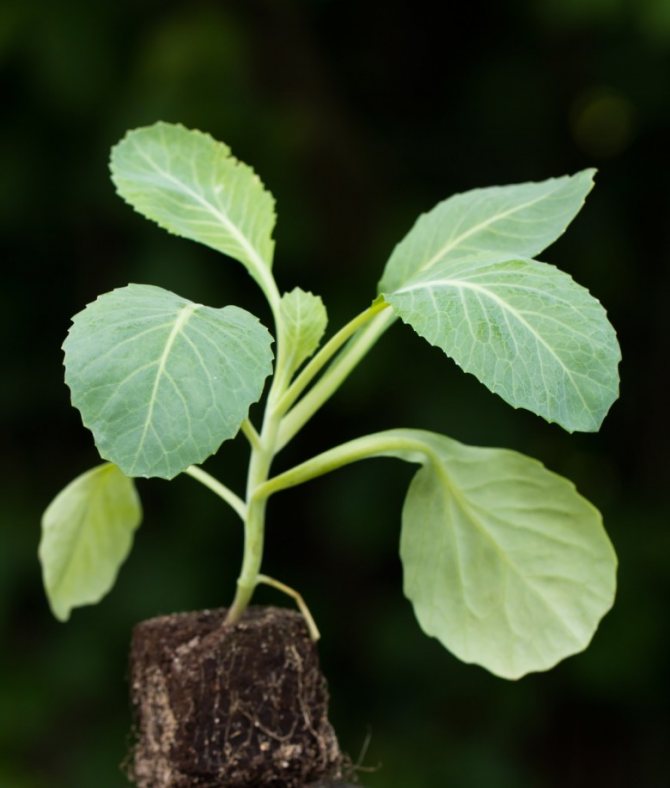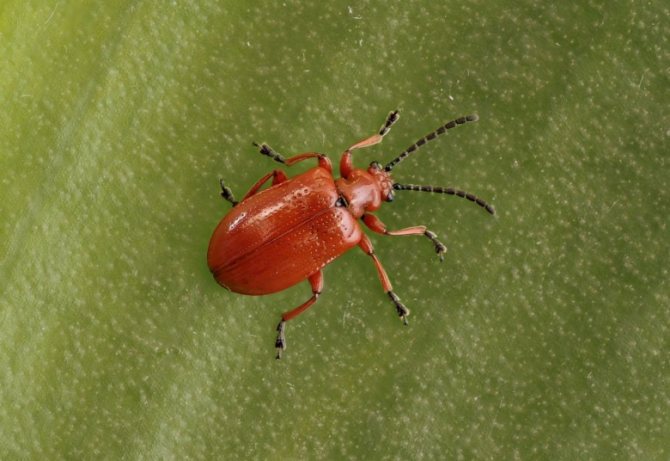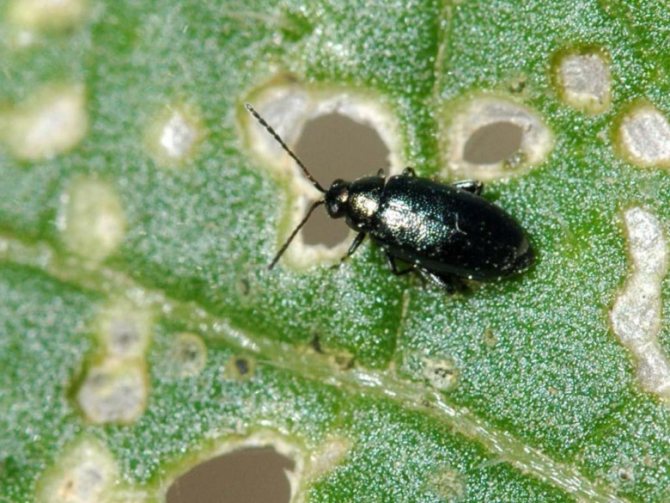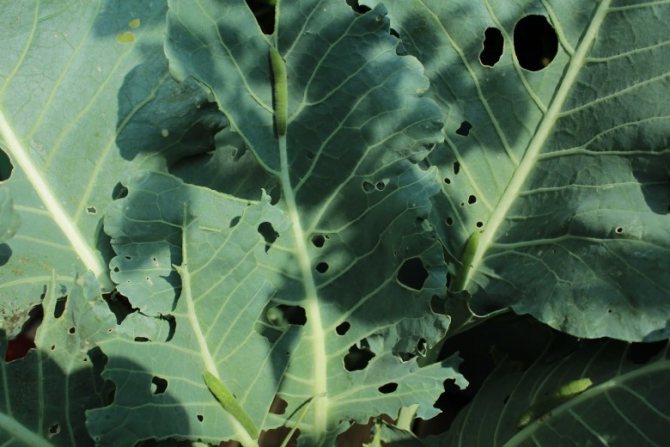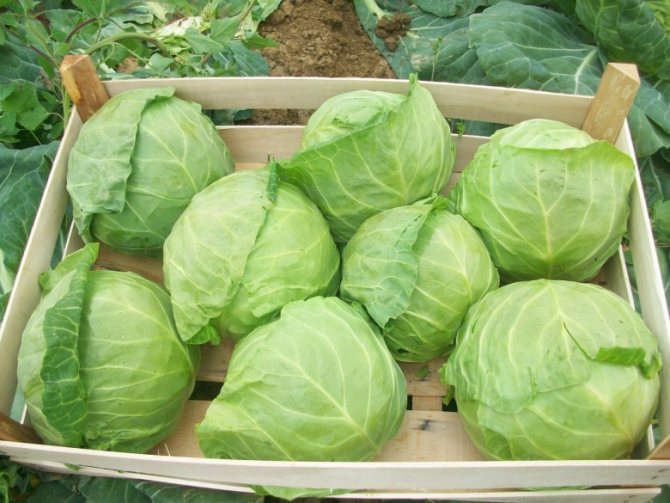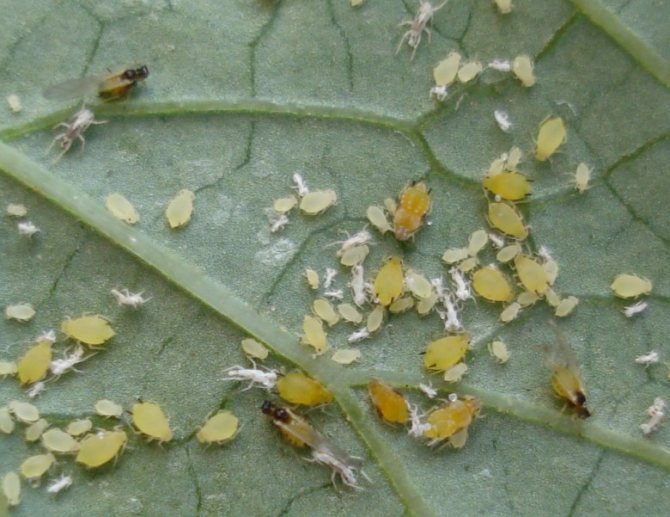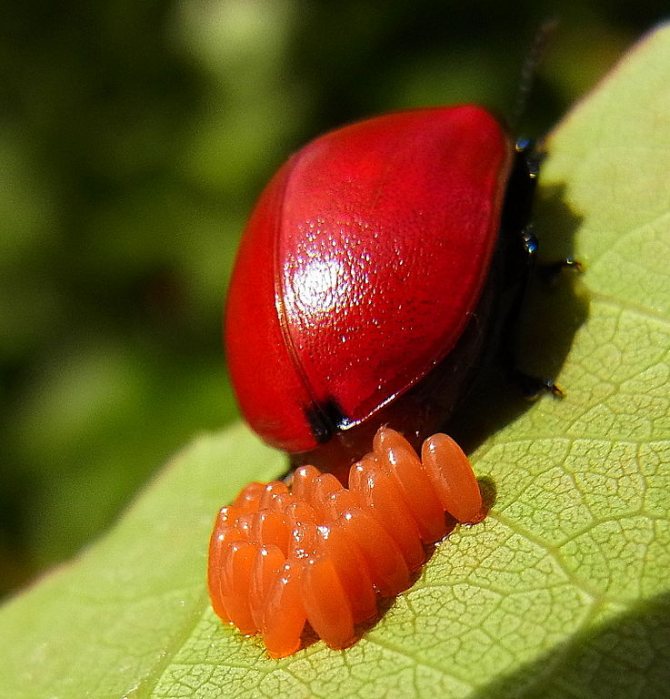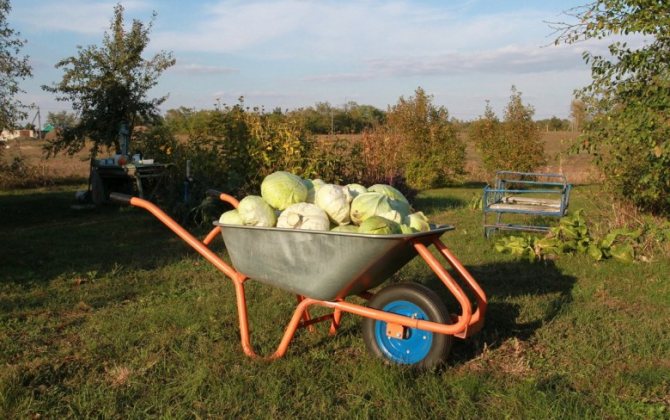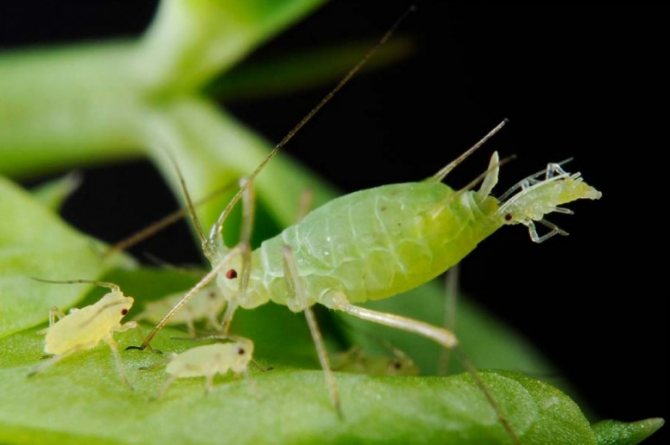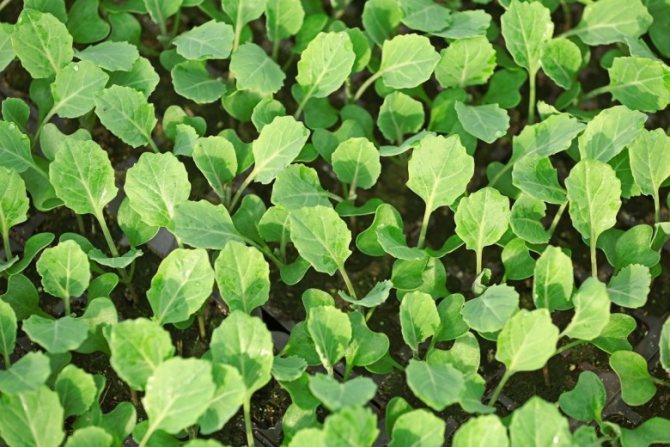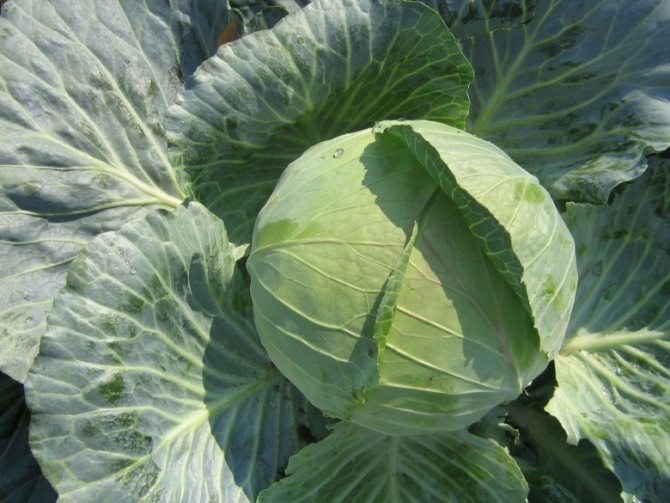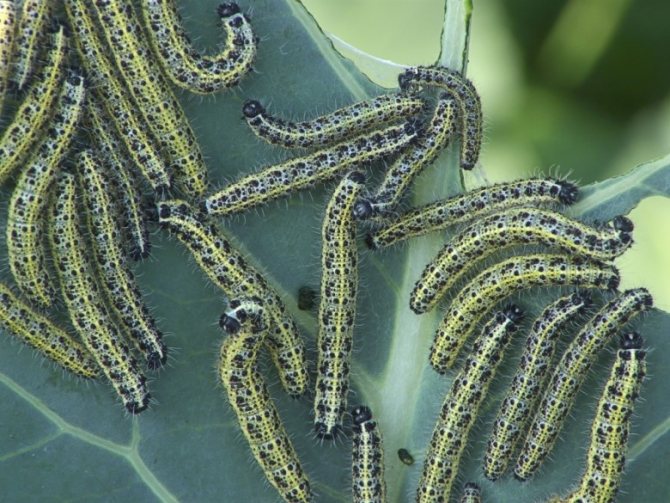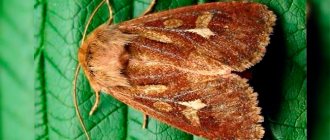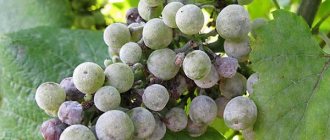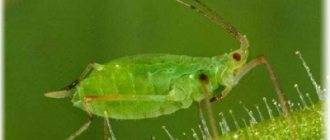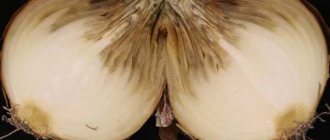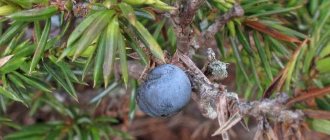Cabbage of all types, during the entire growing season, is damaged by pests. Cabbage pests are most dangerous in the early stages of development. Barely emerging seedlings are attacked by cruciferous fleas, and the root system suffers from insatiable larvae, caterpillars and cabbage flies. The grown plants attack: cabbage moths, aphids, whitelings, etc. The massive impact of insect pests on cabbage planting leads to a decrease in yield, or even to the death of plants. This article describes the most dangerous insect pests for cabbage and measures to control them.
Cabbage moth - what does it look like and why is it dangerous?
Numerous cabbage pests can be primarily represented by the cabbage moth. With its compact size (1.5 cm in wingspan), the insect causes serious damage to crops. Pests damage the leaves with numerous moves, destroy the apical bud.
You can save cabbage from butterflies of this group by proven means: deep plowing of the soil, spraying plants with organophosphates.
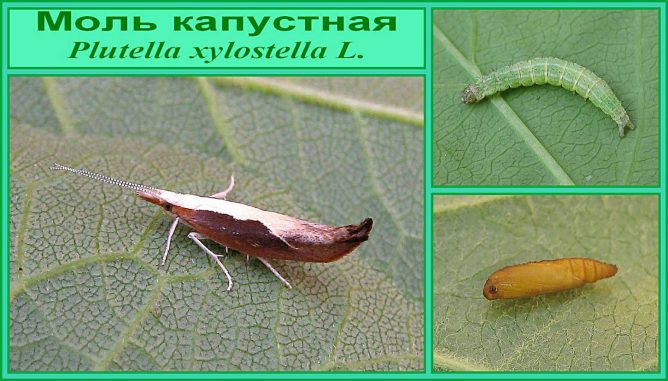
Cabbage moth
The cabbage moth is a butterfly with a wingspan of 4 cm. This pest is distinguishable by brown stripes on the front wings. In winter, the insect prefers to be in the ground, and at the onset of summer, you can find a butterfly. Eggs can be found on the surface of cabbage leaves.
Measures of influence on butterflies:
- remove extraneous plants;
- dig up the ground on the site;
- make every effort to plant seedlings in an earlier time, even before the pest appears.
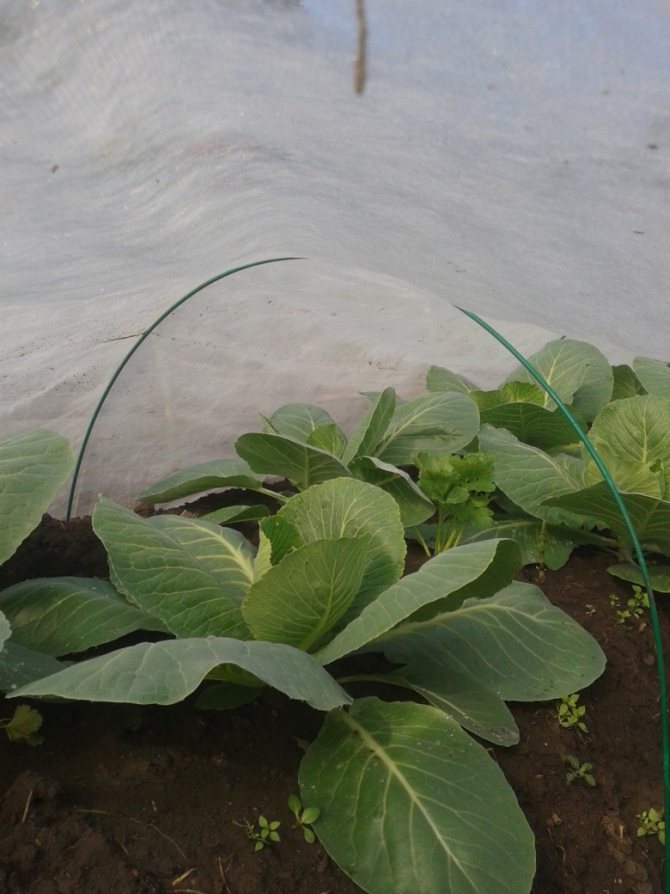

Cabbage cavernous stalker - how to defeat?
The cauliflower stalk is a black beetle with a head in the form of a tube 3 mm long. In winter, he lives under fallen leaves, feeding on the remains of plants in the soil. In the spring, it begins an active life, first feeding on weeds near crops, and then eating cabbage, but so insignificantly that it practically does not cause damage.
Beetle larvae are much more dangerous. They appear by the end of spring from eggs laid in the stem. It is they who gnaw passages in the stem of the plant, gradually reaching the root system, which leads to its wilting and death.
The pest should be dealt with by harvesting plant residues with the onset of autumn, digging up the soil and regularly weeding. Of the chemical agents, the especially effective Phosbecid and Actellic can be distinguished.
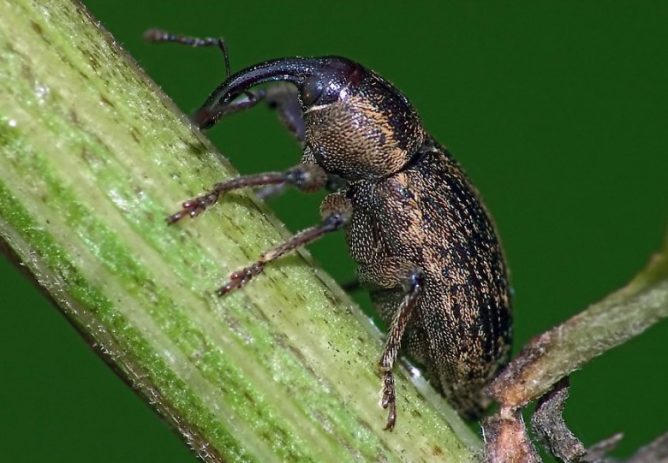

Life span and cycles
There are 4 stages in the life cycle of cabbage butterflies.
Egg
The number of eggs that 1 cabbage plant lays depends on the climate in the region. In zones with a predominantly warm climate, butterflies reproduce more often.
Oviposition occurs from April to September.
At the end of wintering, butterflies immediately begin to reproduce. After mating, the female lays about 200 eggs on cruciferous plants. Most often, the 1st generation does not harm agriculture, since egg-laying takes place on wild crucifers. But the 2nd generation of butterflies prefers to lay eggs in gardens.
Caterpillar
Depending on external conditions, it may appear 2-3 weeks after oviposition. As soon as the larvae grow up, they scatter over the cabbage leaf and begin to gnaw it from the underside from the edges to the veins.


In the form of a caterpillar, the cabbage can survive for up to 40 days. During this time, she changes the outer shell several times, doing this every 5-7 days. To maintain normal life, they need dry weather with a temperature of no more than 25 degrees.
The most harmful form of life of the cabbage.
Chrysalis
Outwardly it resembles a caterpillar, but at the same time it does not cause severe damage to plants. It attaches to individual parts of the cruciferous plant and stays in this form for up to 2 weeks. If the season comes to an end, the cabbage goes into hibernation and hatches from the cocoon only with the onset of warmth.
Adult
An adult butterfly lives for about 30 days. At the same time, she is capable of causing great harm to agriculture, laying eggs on cabbage leaves.
Cabbage leaf beetle - how to exterminate the site
One of the most common cabbage pests is the leaf beetle. Visually, this beetle is no more than 5 mm in length, dark green in color. It feeds on cabbage leaves, leaving behind indentations and numerous holes.
To protect the cabbage from the leaf beetle, the beds with the plant must be weeded regularly, removing weeds from the Cabbage family. Of the folk remedies, tobacco dust with slaked lime and ash is considered the most effective. Also, using folk remedies, a certain result can be achieved with glue traps.
Chemicals in pest control are used in cases where preventive measures and folk methods do not give an effect. Usually it is Aktellik or Bankol for processing small areas and Bi-58, Karate - for the destruction of insects in a production environment.
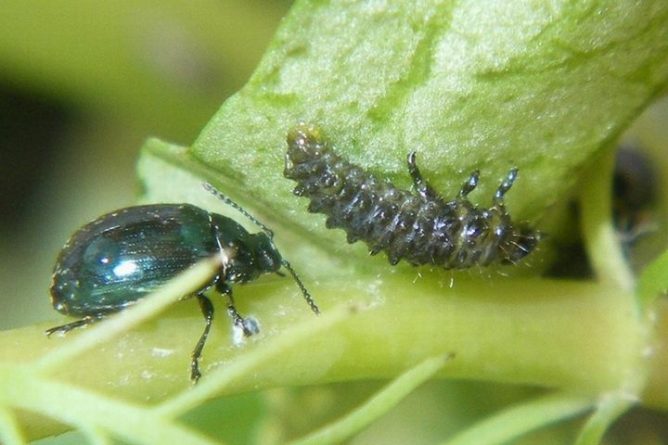

Who eats cabbage
Experienced vegetable growers are able to outwardly determine which pests have started up on cabbage beds, and choose methods of dealing with them. This common vegetable has a lot of varieties and varieties, with its own characteristics and characteristics.
Pests of white cabbage
During the growing season, it is necessary to process areas with white cabbage several times. There are several main pests, they appear at different times and cause damage to different degrees and forms.
- Aphid. It feeds on cabbage juice, sucking it out of the leaves. In large quantities, it is capable of destroying a head of cabbage in a short period. You can visually determine the presence of aphids. The leaves lose their color, acquire pinkish tints, and curl. Colonies are located at the bottom of the foliage, practically merging with the color of the plants. In the initial stage of the lesion, it is possible to use folk methods, in advanced cases, chemical preparations are used. For the prevention of planting, they are placed next to carrots, dill, marigolds.
- Thrips. The tiny size of the sucking pests cannot be seen with the naked eye. Their presence is determined by the local discolored area where insects are located and feed. These places become discolored, brown and die off.
- Cruciferous bugs. These large insects are easy to spot on foliage due to their characteristic green color and red spots on the elytra. It is possible to collect them by hand. They move from the weeds that are nearby, so it is necessary to regularly weed the areas adjacent to the plantings.
- Slugs. Appear in high humidity, rainy weather. They do not tolerate high temperatures. In the daytime, they hide among the leaves, feeding only at night. They transfer pathogens: downy mildew and powdery mildew, gray rot. To combat them, impromptu traps made of wet rags are laid out, jars of sour jam are placed around the perimeter. As a preventive measure, the soil is limed. But this method is not suitable for acidic soils.
- Caterpillars of butterflies. Caterpillars of cabbage whites and scoops, cabbage moths harm.They gnaw holes, leaving traces of feces on foliage. It is difficult to collect them manually, usually special means and industrial chemicals are used.
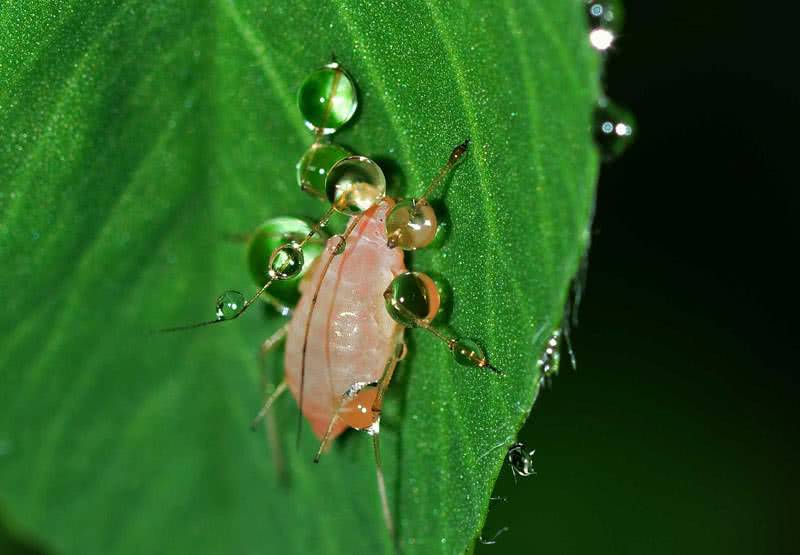

Aphid
Advice! Experienced vegetable growers recommend sprinkling cabbage with tobacco dust.
At any stage of growth, cabbage can be damaged or completely destroyed by insects living in the soil.
Cabbage root pests
By damaging the root system, pests can damage the future harvest: plants stop growing or die altogether. Cabbage has several dangerous root-eating pests.


- Medvedka. One of the worst pests for all vegetable crops, including cabbage. Large insects with powerful jaws, feeding on roots, are capable of destroying young plantations in a short period. To combat them, pesticides are placed in the holes during planting. The procedure is repeated several times per season. For the bear (in the common people - "cabbage"), they lay out traps: bottles of beer, burying them in the ground in a reclining position. Fresh manure is laid in the fall. Pests climb there for the winter. With the onset of heat, they take it out of the site with a shovel and destroy it.
- May beetle larvae. Feeding exclusively on roots, large white larvae are very gluttonous. Getting to the garden, they destroy the crop "at the root".


Medvedka
Advice! Before planting, the root system of plants is treated with preparations "Aktara", "Medvetox" and similar chemical compositions.
You can find pests with deep digging of the earth. It is carried out twice; in spring and autumn, by hand picking insects and their larvae. It is not recommended to organize compost pits and manure heaps in the immediate vicinity of the vegetable garden.
Cabbage seedling pests
Damaging cabbage in the seedling stage, pests significantly slow down its growth. The heads of cabbage do not set or stop growing completely. In some cases, young plants die. Plantings are damaged by both sucking and gnawing insects and their larvae and butterflies.
- Flea. Small insects, 1 to 3 mm long. A particularly active phase is late spring and early summer. They gnaw holes on young seedlings, which leads to drying out and death. Cabbage is treated with Actellik.
- Bedbugs. Insects and their larvae also cause harm. Adults pierce the leaves and suck out the juice. You can notice the damage by the yellowed areas, which subsequently dry out and die off. Saliva is poisonous, young seedlings may die, especially in hot dry weather. The beds are treated with insecticides. For prevention, the territory adjacent to them is regularly weeded, plant residues are carried out beyond the perimeter of the site.
- Cabbage leaf beetle. Adult large green beetles gnaw at the edges of the leaves. The larvae laid by them continue to destroy the plantings, feeding on the pulp of the foliage. They multiply very quickly, several times per season. To combat the leaf beetle, cabbage is sprayed with chemicals.
- Caterpillars. The most voracious pests in existence. Gnawed areas on vegetables are dangerous to human health. Destroyed using folk methods and using insecticides.


Cabbage leaf beetle
Advice! It is recommended to plant annual flowers along the perimeter of cabbage plantations: large insects and birds arriving in the plant destroy caterpillars. Nettle growing in the immediate vicinity helps.
The root system of the seedlings is protected before planting by dipping it with chemical compounds, spreading pesticides in rows and holes. Treatment of plants with already appeared traces of damage must be carried out as soon as possible.
Chinese cabbage pests
The soft and delicate leaves of Chinese cabbage are easily attacked by insects, spoiling the appearance and destroying plants at the seedling stage.The main pests are fleas and slugs.
To prevent damage, planting is recommended at a specific time: in early spring or late summer, vegetables grow very quickly. Experienced vegetable growers plant it mixed with tomatoes, onions, potatoes. Spray with preparations "Aktara", "Intra-Vira", "Aktellik".
Chinese cabbage pests
They are able to destroy heads of cabbage in a short period of time. Leaves dry and die off. Plants are not fully formed or die.
Slugs are fought with folk methods: boards, burdock leaves are laid out in the rows. Then the insects are harvested by hand. Sprinkle the areas with a composition of salt, dry mustard, wood ash and hot ground pepper.
Broccoli cabbage pests
In the fight against pests on broccoli, folk remedies and aggressive treatments with industrial insecticides are used. There are many pests that prefer this cabbage variety.
- Spring cabbage fly. Small insects lay larvae that feed on roots, stems and heads of cabbage.
- Summer cabbage fly. Large adults begin to fly in mid-summer. The larvae feed on all parts of the vegetable crops.
- Cabbage (turnip) whites. Butterflies lay eggs on the inside of the leaves. They feed preferably on foliage.


Summer cabbage fly
Popular and effective drugs "Fitoven", "Bitoxibacillin", "Lepidocid" and other similar insecticides.
Brussels sprouts
It is affected by most of the common pests of this type of vegetables. Due to the small size of the heads of cabbage, plants die especially quickly when aphids are affected. Sparrows and pigeons cause harm. To prevent damage, a protective net stretched over the stakes is practiced.
Bedbug: how to protect cabbage from pests?
Usually, the cabbage bug harms not only cabbage, but also all cruciferous plants. Plants affected by insects turn yellow, become covered with dying spots on the leaves, and die at a young age.
An adult bug is not more than 1 cm in length with a black head and a red back with black dots. It is enough to treat cabbage from pests with Match or Angio insecticides to solve the problem.


Whitefly on cabbage - how to win
Whitefly is a small insect up to 2 mm in length, white with almost invisible dark spots. The danger to crops is represented by larvae camouflaging in the lower part of the leaves. Located on plants, they secrete a substance that nourishes the sooty fungus, as a result of which the leaves turn black.
The most effective remedy for pests of this group is the timely loosening of the soil, followed by fertilization and spraying of plants. This should be done regularly, along the way using traps with tobacco bait.


Cabbage white
Eggs are deposited on the underside of the cabbage leaves. Then caterpillars are born, for which the food is the leaves. Caterpillars completely absorb the foliage of the crop.
On the vegetable itself, only the veins can be discerned. The insect affects the growth of the plant, as a result, heads of cabbage are not formed on it.
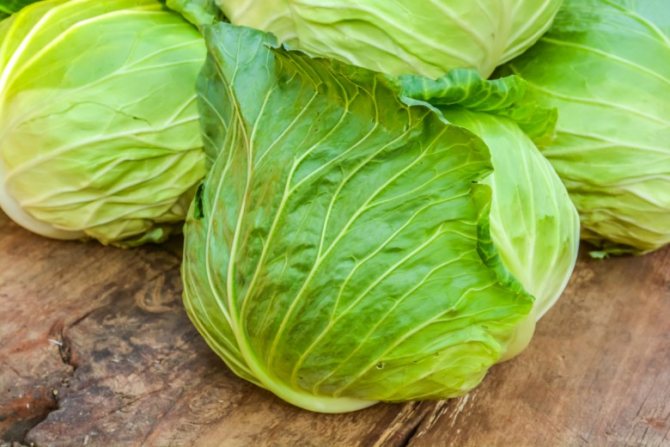

Control measures:
- subject the culture to a solution of wormwood;
- protect the culture by planting dill and carrots nearby;
- inspect the foliage of the crop daily in order to identify insects and get rid of them.
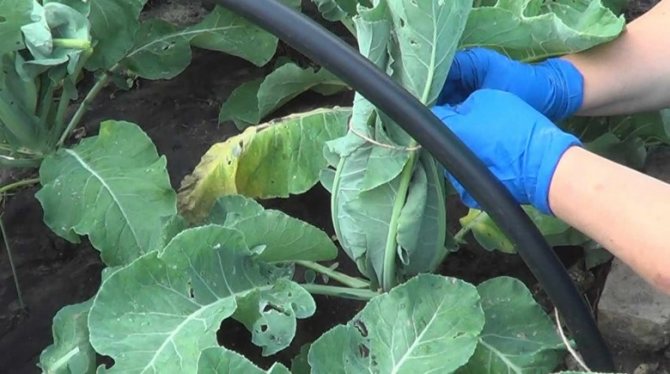

Cabbage flies - methods of struggle
A dangerous pest is the cabbage fly, which predominantly chooses the root systems of plants as a source of nutrition. There are two types of flies: summer and spring. Summer prefers to eat late-ripening cabbage varieties, spring - early varieties. You can fight the pest in the same way as in previous cases by proper soil treatment, as well as using proven insecticides.
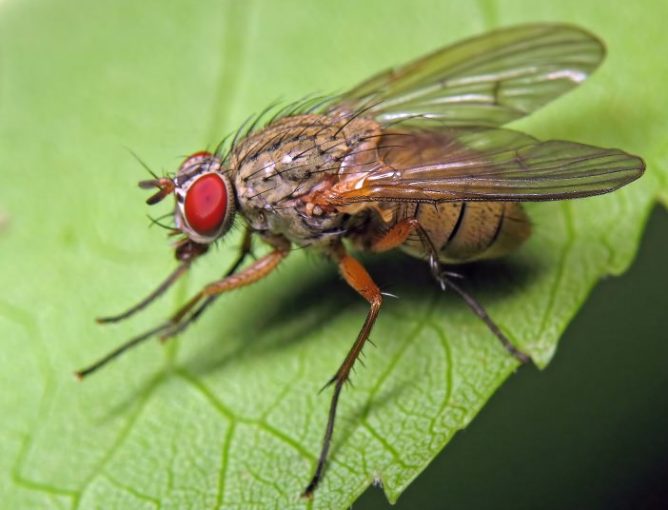

Long-stemmed harmful - harm and methods of extermination
The insect resembles a large mosquito, as its body length is about 2.5 cm.In addition to cabbage, the centipede eats leeks and celery. The danger of the pest lies in the fact that it eats cabbage underground, affecting the root system, which is simply destructive for young plants.
It is easy to defeat an insect by caring for the soil, removing plant debris, weeds, and digging up the ground. A certain positive effect can be achieved if the plants are sprayed with calcium cyanamide.
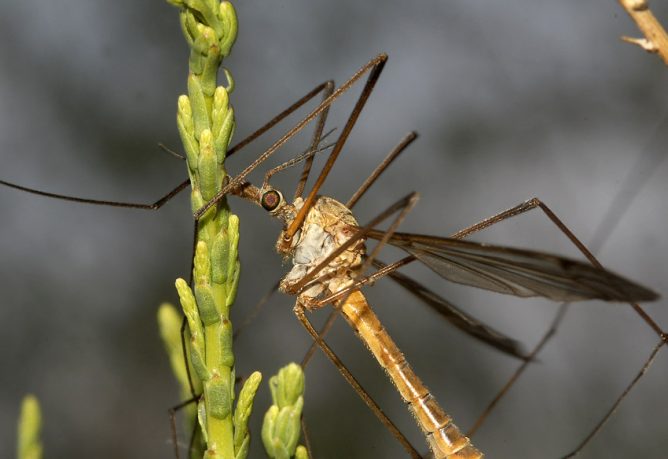

How to process? Drug overview
Recently, new methods of dealing with cabbage caterpillars have appeared. These include microbiological and fungal preparations that help to conduct environmentally friendly farming. They are used to kill harmful insects. But such drugs do not pose a danger to people, animals, birds and vegetation.
They can be considered biological weapons against pests. The preparations contain germs or fungi that infect caterpillars. Those fall ill and die. After the extermination of insects, fungi and microbes disappear.
- Entobacterin... Available in the form of a gray powder. When the drug enters the caterpillar's body at the moment when it eats cabbage, it leads to its death. For ten liters of water, fifty grams of the drug are needed. The powder is diluted in liquid and sprayed on the plants. For the drug to work, it must be eighteen to thirty degrees outside. If the air is colder, the powder will not work because germs will stop multiplying. Processing must be carried out at least twice with an interval of seven days.
... Produced from spores of beneficial soil bacteria. Has an effect on the intestines. The drug causes paralysis of the caterpillar's gastrointestinal tract within four hours. After a day, the pest's body is completely infected with bacteria. The result of the action of lepidocide is a complete failure of the ability to move and eat. Within seven days, the insect dies completely. In addition, the pungent smell of the drug helps to scare away butterflies and they do not lay eggs on cabbage. Processing should be done in the morning or evening, when there is no direct sunlight. For ten liters of water, take twenty to thirty grams of the drug. Re-processing is carried out after eight days.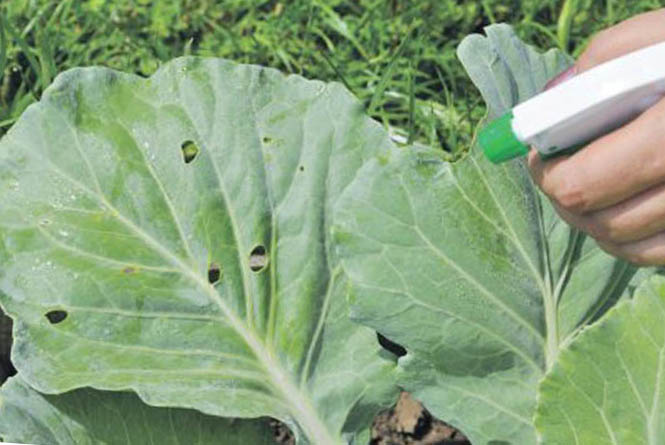

Lepidocide- Bitoxibacillin... The drug is based on one of the soil bacteria (Bacillus thuringiensis). Its action leads to the death of the caterpillar from hunger. Bitoxibacillin poisons the insect's body. The desire to eat decreases. Three, sometimes five days later, the caterpillar dies. After seven days, the eggs die. Per
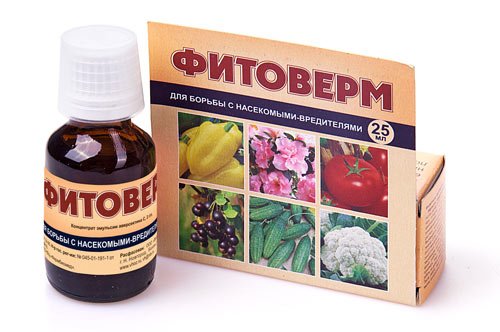

a week you need to carry out three treatments. Within fourteen days, the pests die completely. - Fitoverm... It is produced on the basis of the metaplasma of streptomyces fungi. The product is used immediately after dilution in water. The agent enters the gastrointestinal tract of the caterpillar when it eats cabbage. The action begins after a twelve hour period. The drug paralyzes the insect. It stops moving and stops eating. So exhaustion sets in and the caterpillar dies three days after the remedy began to work. It is necessary to spray the plant at a time of day when the direct rays of the sun do not fall on the ground (at dusk early in the morning or in the evening). It is also best to carry out work in warm weather and in the absence of rain. The solution is prepared as follows: half a liter of the drug is diluted in one liter of water.
In order to prepare an insecticide-based solution, do not use cooking containers. Also, seven days before harvesting, cabbage processing should be stopped.
Wavy flea on cabbage - about the dangers and methods of extermination
The insect harms not only cabbage, but also horseradish, turnips, radishes and other crops. It can be recognized by its characteristic yellow stripes on the elytra and its small size (up to 3 mm). To protect cabbage from flea beetles, you need to regularly loosen the soil, use a 0.1% solution of Actellik or Foximom for spraying in case of mass accumulation.Will help prevent cabbage diseases as a result of pest infestation of tobacco-based products.
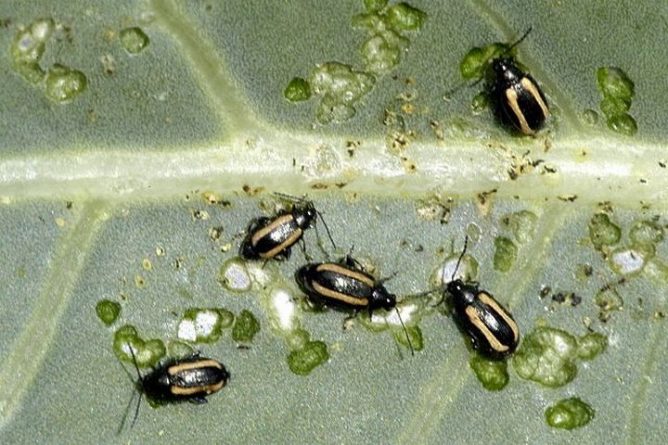

Who is a scoop on cabbage and why is it dangerous?
The insect is the worst enemy of cabbage, as well as onions, lettuce, peas and beets. An adult cabbage scoop in the form of a butterfly is not striking due to its unremarkable appearance. The main danger for mature individuals is in the eggs they lay. Over time, larvae hatch from them, which rapidly spread throughout the plant, damaging the leaves and leaving excrement.
You can fight the scoop mechanically, collecting eggs by hand, as well as using proven chemicals. Will help in the process of extermination of the pest and its natural enemy - trichogram egg-eating.


Why are there a lot of cabbage butterflies in the garden?
Novice gardeners are often confused about what cabbage butterflies eat, considering them to be pests of tomatoes, berry and fruit trees. Our heroes are attracted exclusively by cabbage beds and plants from the cruciferous family. They often fly not in flocks, but alone, sometimes overcoming over 30 km per hour. The first eggs are laid on weeds, but the rest of the generations are accurately attached to cultivated plants.
Fields with plantings of cruciferous vegetables attract them with special substances with a bitter taste - sinigrin and sinalbin. These compounds are also present in some herbs - mignonette, nasturtium, plants of the caper family. The butterfly feels the smell from these chemical compounds in a fraction of a gram, instantly determining which leaf to lay the egg on. The more often you plant monocultures in the same garden without using crop rotation, the greater the likelihood of a strong infection of the site with this pest.
How to deal with the cabbage butterfly?
People have been fighting with whites for centuries, many different ways have already been invented how to get rid of cabbage, from exposure to insects with potent drugs to scaring away butterflies with folk remedies. With a small infection of the beds with caterpillars, you can limit yourself to preventive measures - safe infusions and decoctions that are unable to critically poison the human body.
Preventive remedies for the cabbage butterfly:
- Constantly, from the beginning of the gardening season, destroy weeds in the garden, on which butterflies lay eggs in early spring.
- Inspect the cabbage daily from the underside of the leaf, collecting whitewash eggs.
- Digging the garden in autumn helps to reduce the population of cabbage.
- In autumn, examine the bark of fruit trees by destroying pupae.
- It is advisable to plant cabbage early before the mass flight of butterflies.
- Do not place cabbage next to horseradish, turnips, radishes, field mustard.
- If the garden bed is small, then it can be covered with a thin plastic mesh that conducts the sun's rays well, but protects plant leaves from contact with insects.
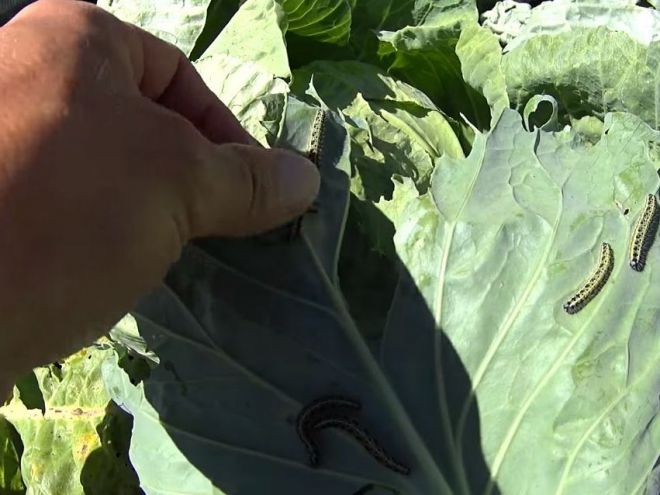

How to scare off a cabbage butterfly?
Preventive measures alone cannot deal with the pest, if there are a lot of other gardens around your site, then there is always the possibility of migration of new generations of butterflies to your garden in the summer. In the matter of how to deal with cabbage, preparations based on infusions from plants help well. They do not act instantly, have a shorter protective period compared to chemical preparations, but are practically harmless to humans. Always add liquid soap to the water when processing cabbage!
Folk remedies for the cabbage butterfly:
- A bottle of valerian pharmacy infusion is diluted in 3 liters of water, the garden is sprayed immediately after the solution is prepared.
- We hang cups or eggshells on the garden bed.
- Coniferous infusion - cones, needles, spruce or pine branches are used. It is necessary to insist up to 200 g of the collected material in 2 liters of boiling water. The needles are decanted after a week, the concentrate is applied with water in a ratio of 1:10.
- An infusion of 600 g of potato tops, aged for 48 hours in a bucket of warm water, helps from the whites.
- Spraying with infusion of delphinium leaves (1 kg of dry leaf per bucket of water).
- Treat the heads of cabbage with a solution of ammonia - 50 g of the drug per 10 liters of water.
- A saline solution is used against the whites - 2 tablespoons of salt in a bucket of water.
- You can use tomato tops to make a decoction. Up to 1 kg of leaves and shoots are poured into 3 kg of boiling water and boiled for half an hour. The resulting liquid is cooled and used to process cabbage beds.
- Soap-ash solution - a pound of sifted ash is poured into a bucket of boiling water, insisted, drained, separating the transparent liquid from the sediment.
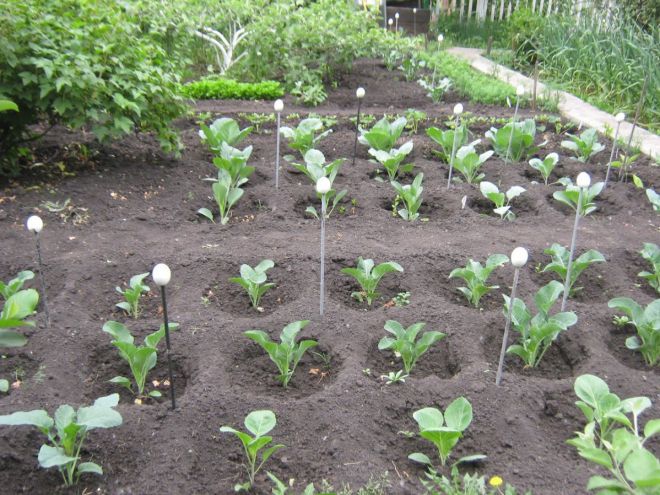

How to poison cabbage?
If the fight against cabbage with folk remedies does not bring results, then with a large distribution of the white woman and its caterpillars, it is necessary to switch to industrial insecticides. Of the biological products, Lepidotsid, Aktofit, Bitoxybacillin, Fitoverm deserve a good recommendation. Effective chemicals are insecticides Karbofos, Aktellik, Decis, Aktara.
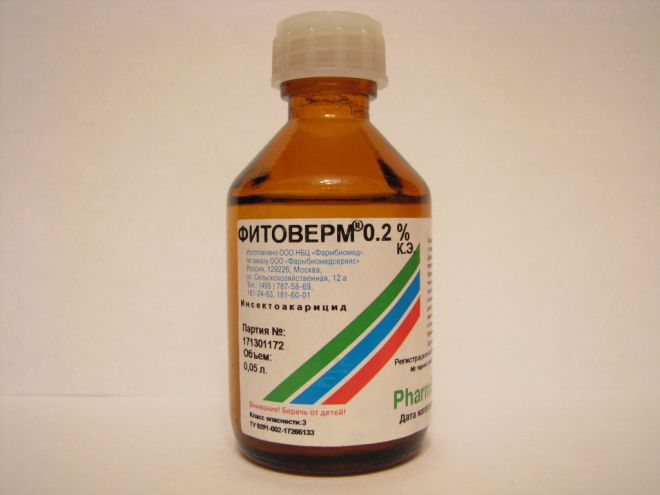

Mass appearance of aphids on cabbage: how to solve the problem
Cabbage aphid is extremely dangerous for crops, rapidly multiplying and difficult to hatch. The pest enters the site more often in the height of summer. Females give birth to larvae, which in the shortest possible time populate huge areas of plants, sucking the juice out of them with a proboscis.
It is possible to fight against aphids on cabbage with the proven preparations "Match" and "Aktara", with the obligatory destruction of plant sediments after harvesting and weeding the soil.
If you need to save seedlings from aphids, then effective folk remedies are well suited - wood ash or a mixture of tobacco dust and ash in equal parts.
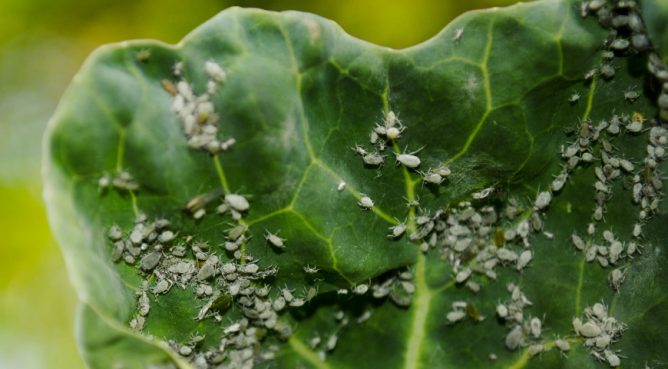

Medvedka - how to recognize and exterminate the pest?
Medvedka is a pest that infects the stems and root system of plants, and is also capable of destroying newly sown seeds. The insect lives underground, is quite large, reaches 6 cm in length in adulthood and has a visual resemblance to cancer.
In order to prevent the development of the disease of cabbage and other crops due to the bear's fault, it is necessary to regularly water the soil with a solution of chlorophos (0.3%), use traps with a grain bait with chlorophos.


Description of the main pests
There are a great many pests capable of destroying cabbage in the beds in part or completely. But most often, gardeners have to deal with the following types of them:
- butterfly larvae;
- aphid;
- land molluscs;
- cabbage fly;
- cruciferous flea.
Caterpillars
Caterpillars are larvae of such butterflies as cabbage, scoop, cabbage moth, etc. Cabbage and cabbage moth lay eggs, as a rule, directly on the leaves. Therefore, hatching, caterpillars immediately begin to feed on them. When there are many larvae, only veins remain from the leaves. Moreover, these pests are able to crawl into the head of cabbage and destroy it from the inside. When the cabbage rots, the larvae crawl to the neighboring plant.
Whitefish caterpillars are usually green, gray or black with yellow stripes; there are small villi on the surface. The length is 3-4 cm. The larvae of the green cabbage moth are only 7-11 millimeters long.
One of the most dangerous for cabbage is considered to be the larvae of the scoop moth, which is associated with their vitality and fertility. One butterfly lays from several hundred to three thousand eggs in its short life. These larvae are especially dangerous for seedlings, as they like to gnaw the legs at the root. Moreover, five caterpillars per night can ruin about a dozen plants.
Despite the fact that aphids are a very small insect, in dry years they can destroy up to 90% of the crop. The thing is that it lives in large colonies and multiplies quickly.
The length of the insect is only 1.5-2 mm. The aphid's mouth apparatus is made in the form of a proboscis, which pierces the protective cover of the leaf and sucks out the cabbage juice. As a result, the plant loses trace elements, which leads to a slowdown in its growth and then complete death.
Note! Aphids are also dangerous in that they can infect with dangerous viruses such as necrotic jaundice, mosaic virus, etc. They can enter the plant along with the saliva of the insect.
Slugs and snails
Slugs and snails, which also love to feast on cabbage, are terrestrial gastropods. Slugs are especially dangerous in the beds, as they appear most often, in large colonies, and they multiply quickly. The size of adults reaches 20 centimeters. As a rule, they are light gray in color, but they are brown with black and white spots and even pure black. The entire surface of the mollusk body is covered with mucus.
Shellfish prefer warm and humid weather. They cannot stand direct exposure to the sun. In order to prevent their reproduction in the garden, it is necessary to carry out weeding in time and remove plant debris in which they can settle.
Slugs leave large holes in their leaves. When there are several individuals, they are ways to destroy cabbage with whole heads of cabbage. Snails also leave holes on the leaves, but of a smaller diameter. Another danger from slugs and snails is that they can infect plants with viruses.
Cabbage fly
The cabbage fly, which happens in spring and summer, is a dangerous pest that can leave the gardener completely without a crop. Visually, it is difficult to distinguish it from an ordinary housefly. Its spring variety has a light ash color and three longitudinal stripes on the back. The length of an adult is 5.5–6.5 mm. Summer cabbage flies visually practically do not differ from spring ones, but their size is slightly larger - it reaches 7.5 mm in length.
By themselves, they do no harm to cabbage, but their larvae damage the root system. Therefore, the plant has no external damage, but it becomes lethargic and acquires a bluish tint.
Identifying fly larvae is not easy. To do this, you need to loosen the soil around the plant. The larvae are white, about 8 cm long, have no legs and a pronounced head, are rather slow. The main way to prevent cabbage flies from beds is deep plowing of the land in the fall and its careful leveling.
Cruciferous flea
The cruciferous flea is a small bug several millimeters long. The color can be very different: black with or without yellow stripes, green, blue with gloss or matte surface. A feature of the bug is its powerful hind legs, which allow it to jump several meters. As a result, he can travel long distances.
Pest cruciferous flea
This pest is most active in the spring, when the thermometer rises to fifteen degrees during the day. Fleas make holes in the leaves. Large colonies are capable of destroying most of the plants. Since these insects reproduce very quickly, they pose a threat even to large plantings. For cabbage, not only the bugs themselves are dangerous, but also their larvae, which damage the thin roots, thereby slowing down the development of plants.
Why are slugs dangerous for cabbage?
Slug is an enemy not only for cabbage, but also for a number of other vegetable crops. Most often it strikes:
- zucchini;
- turnips;
- parsley;
- carrot;
- pumpkin, etc.
Fragile plants and seedlings are especially susceptible to its influence. Slugs carry several types of coccidia and ciliates, love high humidity, quickly change shape due to active muscle contraction.
You can fight pests by digging the soil, as well as using a solution of hot pepper, ash mixed with tobacco dust, copper plates dug around the perimeter of the site or small eggshells as an obstacle to movement.
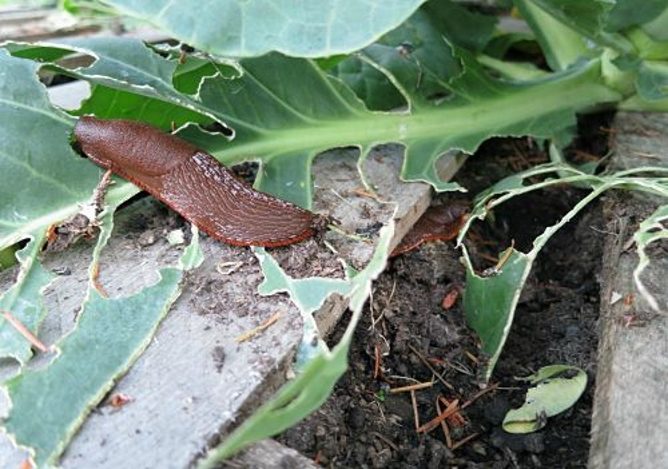

A noticeable result will be achieved by treating plants with vinegar in such a way that the solution does not get on the soil and into the root system. Also, experienced gardeners use soda ash, which is sprinkled on the alleged places of accumulation of slugs.
Prevention methods
The appearance of parasites can be prevented by using simple prevention rules:
- Washing off pupae. All wooden fences around the site should be well washed with running water to get rid of the pupae adhering to them.
- Timely weeding. Weeds, especially those from the cruciferous family, should be removed early in their appearance. Otherwise, they can attract pests.
- Correct neighborhood. You should not plant radishes, radishes, turnips nearby. It is better to plant marigolds, lemon balm, mint around the site, whose smell scares off the butterfly. You can also plant dill or carrots between the rows, as they attract natural enemies of the cabbage.
- Shelter for plants. Even at the seedling stage, cabbage can be covered with an impenetrable cloth that will protect against the invasion of cabbage.
- Burning out the site. In the fall, after harvesting, you need to burn out the area where the cabbage grew. This will help improve the quality of the soil and destroy the remaining pupae.
- Use of prophylactic agents. During the period of active growth of cabbage, it is necessary to periodically process the leaves with biological preparations. For example, Fitoverm.
- Protecting trees. It is also better to wash nearby trees. Process the trunk with lime.
- Scare away. You can scare away butterflies with the help of half an eggshell, put on a wooden post. The butterfly takes such a construction for another representative of the species and, deciding that the place is already taken, flies by.
You can find out about the correct manufacture of a deterrent to prevent the invasion of cabbage by watching this video:
Thrips - how do they affect cabbage and how to fight?
Another worst enemy of cabbage is thrips, small pests that infect the plant, bringing it to death. Signs of the appearance of insects are an abundance of yellow spots on the leaves, underdevelopment of fruits. The massive spread of thrips will lead to the appearance of "silvery" areas on the plant and a noticeable deformation of the stem.
It is possible to achieve a decrease in the number of pests naturally, by adding ladybirds and hoverflies to the site. From biological preparations, it is worth trying infusions of insecticidal plants:
- tagetis;
- garlic;
- celandine;
- tomato, etc.
Among chemical preparations, "Iskra-M" and fufanon-nova are especially distinguished, with which it is important to process the edges of the beds.
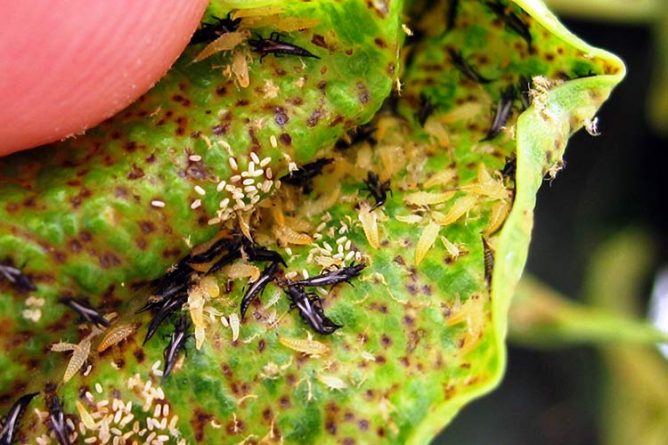

Cabbage bug
The cabbage bug is an insect that waits out the winter under the fall foliage. Eggs are laid on plant stems, cabbage leaves.
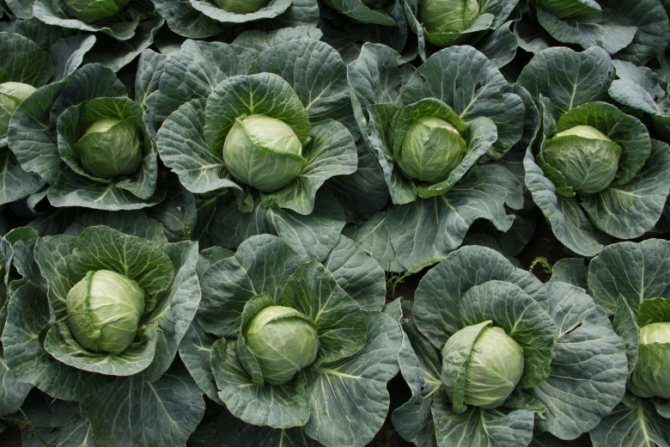

Destruction measures:
- destroy foreign plants;
- try to plant seedlings before insects appear;
- use wormwood infusion for spraying.


